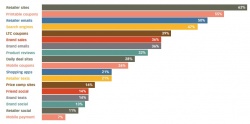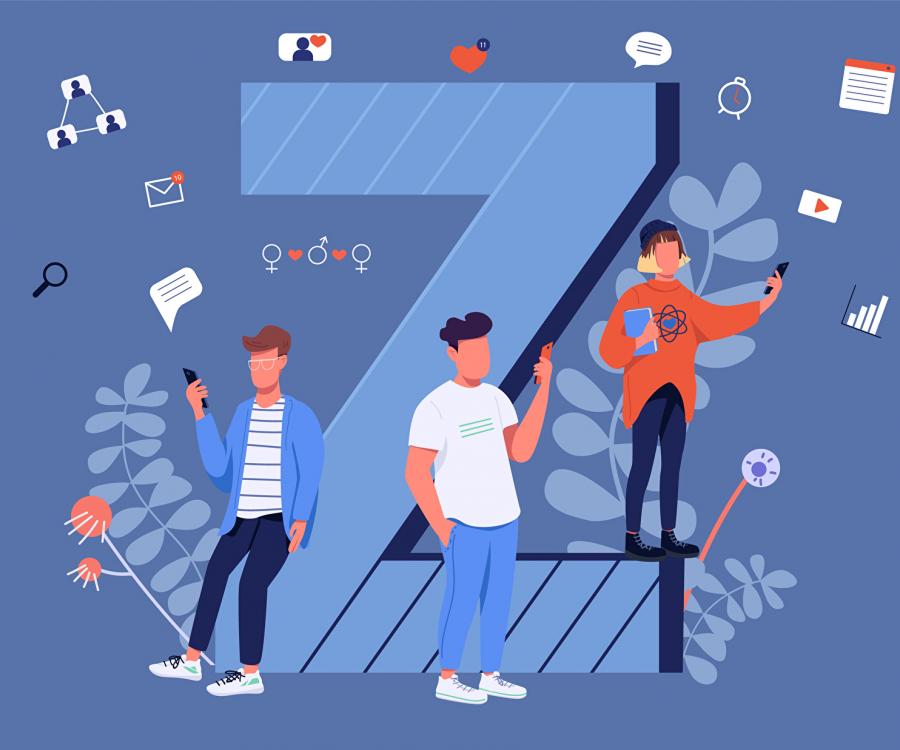Epsilon has released findings from its Digital Shopping Tool Impact Study 2015. The study shows how people are shopping, what’s guiding their purchasing decisions and what tools they are using before, during and after purchase. The research reveals a noticeable shift towards mobile and social digital tools that is changing the very nature of the shopping process.
The Epsilon online study of over 2,800 consumers, coupled with in-depth interviews and discussion boards with over 50 shoppers, measures the usage and influence of 16 different digital shopping tools.
“Overall, the availability of these tools has resulted in a significant shift in the way shopping takes place,” shared Kim Finnerty, Senior Vice President, Research & Insights at Epsilon. “The study shows the process to be more complex and individualized than in the past, with shoppers executing shopping tasks in “chunks” of activity at times, places and on devices that are most convenient for them. Not only are these “deconstructed” journeys highly individual, but they also vary from one shopping “trip” to the next depending the user’s time constraints, device availability and mood.”
Let’s Get Social
According to the research, a retailer’s social media activity has a greater impact on shoppers than the retailer’s website, pointing to the benefit of investing in active engagement with fans via social media. One of social media’s key strengths is its ability to influence trial of new products and brands. Not surprising, social media is even more influential with Millennials than it is with Boomers.
The platform shoppers cite as most influential to their shopping decisions is Facebook, although Pinterest and Google+ are strong contenders. Twitter is much less influential in the shopping process overall, but Millennials state that it is quite influential for them.
“Social media by its nature involves distraction and nonlinear interaction and may be seen as unpredictable by both marketers and shoppers,” Finnerty stated. “However, our study shows that social media becomes both useful and influential precisely because there are so many ways to interact with it. Social as part of the shopping journey improves the experience and informs the purchase decision.”
Shoppers’ “App”etite
This year, as in the past several years, shoppers point to shopping apps as the tool most likely to improve their shopping experience, by facilitating the process and making them feel like a smart shopper. When shoppers speak about how they use shopping apps, their comments include diverse activities such as creating their shopping list, looking for coupons, checking inventory in-store, checking competitive pricing and reading product reviews. Findings show that shopping apps have become the bridge between the virtual and real worlds of shopping. More than any other tool, when shoppers discuss using shopping apps, they talk about them in the context of going to the store or being at the store. Additionally, the study shows that the shopping apps most often used by consumers are those that belong to a specific retailer, rather than a brand or third-party.
Coupons, Coupons, Everywhere
When it comes to coupons, the research unveils that downloading and printing coupons is still a fairly universal phenomenon and one that shoppers continue to find rewarding and influential. 42% of Millennials report using “old school” coupons, compared to 60% of Boomers. Of those shoppers using printable coupons, Millennials are even more likely than Boomers to say the coupons influenced them to buy products they hadn’t planned, to try new products and to choose one store over another.
Learnings from the qualitative portion of the study indicate that people don’t necessarily distinguish between different types of digital coupons in the same way the industry does. They tend to think of coupons delivered digitally to be interchangeable, whether they are printable, mobile-only or Load-to-Card coupons. The ethnographies uncovered a completely new shopping behavior, driven by Millennials and their use of digital coupons. In these shopper journeys, the study found that shoppers are first finding the item they want to buy and then searching to find a specific coupon to apply to the purchase.
Finnerty added, “Rather than being spurred to action by a lucky encounter with a coupon, as was the case with previous generations, shoppers today take for granted that they can search for whatever they want and when they find it, they will also find a coupon. This is a new level and type of shopper control than most imagined when digital coupons were first introduced and it demands changes in the way brands and retailers interact with shoppers.”
For more information including a comprehensive view of the new shopping experience and recommendations on how to better connect with shoppers, download the Digital Tool Impact Study 2015 at: www.engage.epsilon.com/digitalshopperresearch.
Source: Epsilon Data Management, LLC





